Introducing the trimmed helicoid, a soft robot arm that’s based on an elephant’s trunk
Implementing the Most Efficient Picking Paths to Meet Crucial KPIs
Japan show provides glimpse of robots as future of rescue efforts
Code to Joy: Why Everyone Should Learn a Little Programming – Interview with Michael Littman

Code to Joy: Why Everyone Should Learn a Little Programming is a new book from Michael Littman, Professor of Computer Science at Brown University and a founding trustee of AIhub. We spoke to Michael about what the book covers, what inspired it, and how we are all familiar with many programming concepts in our daily lives, whether we realize it or not.
Could you start by telling us a bit about the book, and who the intended audience is?
The intended audience is not computer scientists, although I have been getting a very warm reception from computer scientists, which I appreciate. The idea behind the book is to try to help people understand that telling machines what to do (which is how I view much of computer science and AI) is something that is really accessible to everyone. It builds on skills and practices that people already have. I think it can be very intimidating for a lot of people, but I don’t think it needs to be. I think that the foundation is there for everybody and it’s just a matter of tapping into that and building on top of it. What I’m hoping, and what I’m seeing happening, is that machine learning and AI is helping to meet people part way. The machines are getting better at listening as we try to get better at telling them what to do.
What made you decide to write the book, what was the inspiration behind it?
I’ve taught large introductory computer science classes and I feel like there’s an important message in there about how a deeper knowledge of computing can be very empowering, and I wanted to bring that to a larger audience.
Could you talk a bit about the structure of the book?
The meat of the book talks about the fundamental components that make up programs, or, in other words, that make up the way that we tell computers what to do. Each chapter covers a different one of those topics – loops, variables, conditionals, for example. Within each chapter I talk about the ways in which this concept is already familiar to people, the ways that it shows up in regular life. I point to existing pieces of software or websites where you can make use of that one particular concept to tell computers what to do. Each chapter ends with an introduction to some concepts from machine learning that can help create that particular programming construct. For example, in the chapter on conditionals, I talk about the ways that we use the word “if” in regular life all the time. Weddings, for example, are very conditionally structured, with statements like “if anyone has anything to say, speak now or forever hold your peace”. That’s kind of an “if-then” statement. In terms of tools to play with, I talk about interactive fiction. Partway between video games and novels is this notion that you can make a story that adapts itself while it’s being read. What makes that interesting is this notion of conditionals – the reader can make a choice and that will cause a branch. There are really wonderful tools for being able to play with this idea online, so you don’t have to be a full-fledged programmer to make use of conditionals. The machine learning concept introduced there is decision trees, which is an older form of machine learning where you give a system a bunch of examples and then it outputs a little flowchart for decision making.
Do you touch on generative AI in the book?
The book was already in production by the time ChatGPT came out, but I was ahead of the curve, and I did have a section specifically about GPT-3 (pre-ChatGPT) which talks about what it is, how machine learning creates it, and how it itself can be helpful in making programs. So, you see it from both directions. You get the notion that this tool actually helps people tell machines what to do, and also the way that humanity created this tool in the first place using machine learning.
Did you learn anything while you were writing the book that was particularly interesting or surprising?
Researching the examples for each chapter caused me to dig into a whole bunch of topics. This notion of interactive fiction, and that there’s tools for creating interactive fiction, I found pretty interesting. When researching another chapter, I found an example from a Jewish prayer book that was just so shocking to me. So, Jewish prayer books (and I don’t know if this is true in other belief systems as well, but I’m mostly familiar with Judaism), contain things you’re supposed to read, but they have little conditional markings on them sometimes. For example, one might say “don’t read this if it’s a Saturday”, or “don’t read this if it’s a full moon”, or “don’t read if it’s a full moon on a Saturday”. I found one passage that actually had 14 different conditions that you had to check to decide whether or not it was appropriate to read this particular passage. That was surprising to me – I had no idea that people were expected to do so much complex computation during a worship activity.
Why is it important that everybody learns a little programming?
It’s really important to keep in mind the idea that at the end of the day what AI is doing is making it easier for us to tell machines what to do, and we should share that increased capability with a broad population. It shouldn’t just be the machine learning engineers who get to tell computers what to do more easily. We should find ways of making this easier for everybody.
Because computers are here to help, but it’s a two-way street. We need to be willing to learn to express what we want in a way that can be carried out accurately and automatically. If we don’t make that effort, then other parties, companies often, will step in and do it for us. At that point, the machines are working to serve some else’s interest instead of our own. I think it’s become absolutely essential that we restore a healthy relationship with these machines before we lose any more of our autonomy.
Any final thoughts or takeaways that we should bear in mind?
I think there’s a message here for computer science researchers, as well. When we tell other people what to do, we tend to combine a description or a rule, something that’s sort of program-like, with examples, something that’s more data-like. We just intermingle them when we talk to each other. At one point when I was writing the book, I had a dishwasher that was acting up and I wanted to understand why. I read through its manual, and I was struck by how often it was the case that in telling people what to do with the dishwasher, the authors would consistently mix together a high-level description of what they are telling you to do with some particular, vivid examples: a rule for what to load into the top rack, and a list of items that fit that rule. That seems to be the way that people want to both convey and receive information. What’s crazy to me is that we don’t program computers that way. We either use something that’s strictly programming, all rules, no examples, or we use machine learning, where it’s all examples, no rules. I think the reason that people communicate this way with each other is because those two different mechanisms have complementary strengths and weaknesses and when you combine the two together, you maximize the chance of being accurately understood. And that’s the goal when we’re telling machines what to do. I want the AI community to be thinking about how we can combine what we’ve learned about machine learning with something more programming-like to make a much more powerful way of telling machines what to do. I don’t think this is a solved problem yet, and that’s something that I really hope that people in the community think about.
Code to Joy: Why Everyone Should Learn a Little Programming is available to buy now.

|
Michael L. Littman is a University Professor of Computer Science at Brown University, studying machine learning and decision making under uncertainty. He has earned multiple university-level awards for teaching and his research on reinforcement learning, probabilistic planning, and automated crossword-puzzle solving has been recognized with three best-paper awards and three influential paper awards. Littman is co-director of Brown’s Humanity Centered Robotics Initiative and a Fellow of the Association for the Advancement of Artificial Intelligence and the Association for Computing Machinery. He is also a Fellow of the American Association for the Advancement of Science Leshner Leadership Institute for Public Engagement with Science, focusing on Artificial Intelligence. He is currently serving as Division Director for Information and Intelligent Systems at the National Science Foundation. |
Amazon delivery drones: How the sky could be the limit for market dominance
Automatic Loading and Unloading of Pressed Parts Through 3D Container Inspection
Warehouses may be the first industry to adopt humanoid robot workers
A robot that can detect subtle noises in its surroundings and use them to localize nearby humans
Robots learn faster with AI boost from Eureka
Researchers create magnetic microrobots that work together to assemble objects in 3D environments
Robo-Insight #6
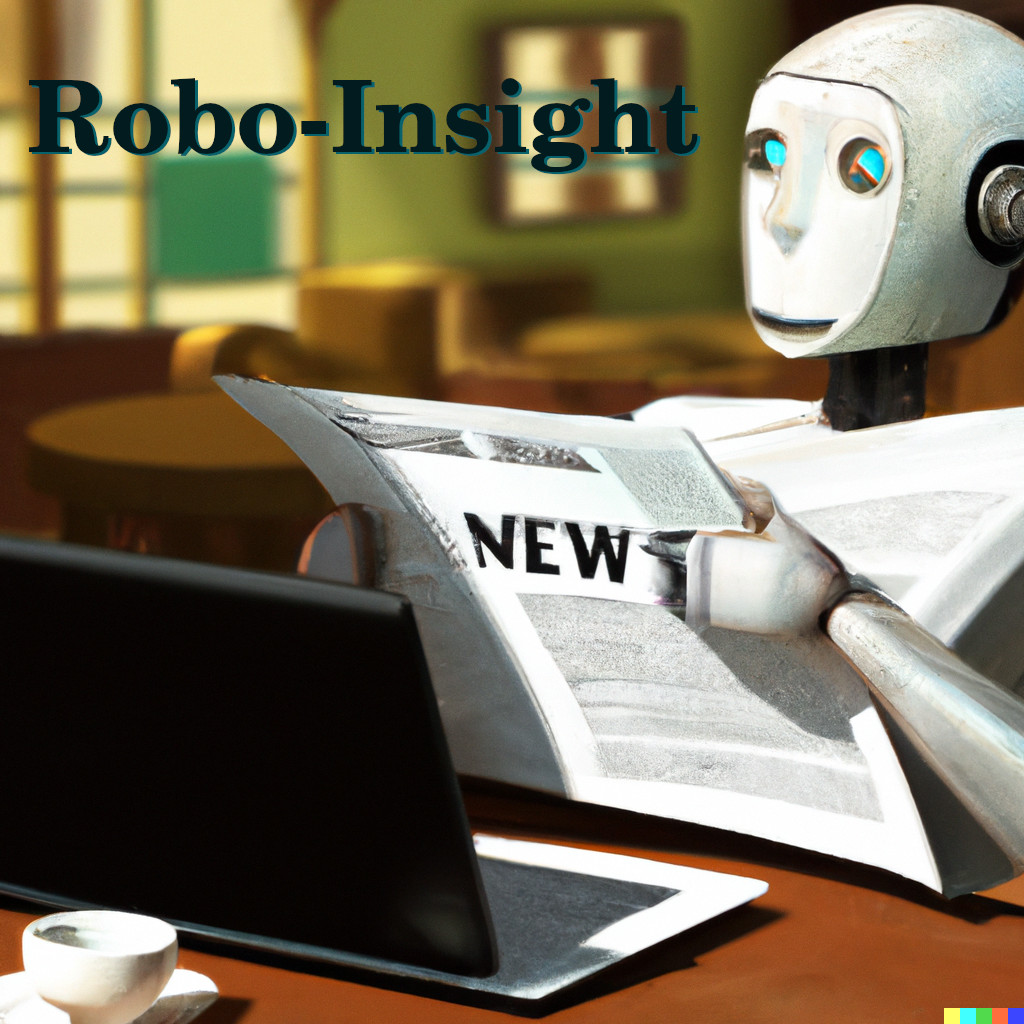
Source: OpenAI’s DALL·E 2 with prompt “a hyperrealistic picture of a robot reading the news on a laptop at a coffee shop”
Welcome to the 6th edition of Robo-Insight, a robotics news update! In this post, we are excited to share a range of new advancements in the field and highlight robots’ progress in areas like medical assistance, prosthetics, robot flexibility, joint movement, work performance, AI design, and household cleanliness.
Robots that can aid nurses
In the medical world, researchers from Germany have developed a robotic system designed to help nurses relieve the physical strain associated with patient care. Nurses often face high physical demands when attending to bedridden patients, especially during tasks like repositioning them. Their work explores how robotic technology can assist in such tasks by remotely anchoring patients in a lateral position. The results indicate that the system improved the working posture of nurses by an average of 11.93% and was rated as user-friendly. The research highlights the potential for robotics to support caregivers in healthcare settings, improving both nurse working conditions and patient care.
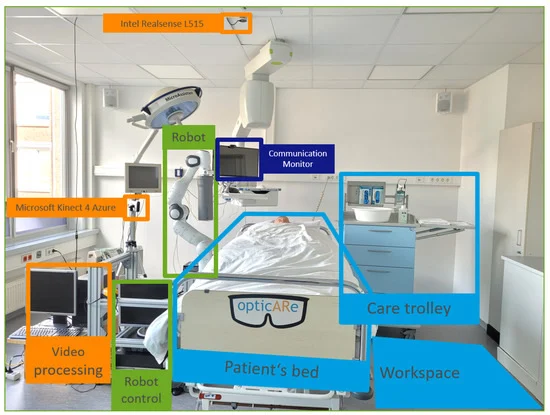
Arrangement of patient room used in the study. Source.
Robots enhancing bionic hand control
Keeping our focus healthcare-related, recently researchers from numerous European institutions have achieved a significant breakthrough in robot prosthetic technology, as they successfully implanted a neuromusculoskeletal prosthesis, a bionic hand connected directly to the user’s nervous and skeletal systems, in a person with a below-elbow amputation. This achievement involved surgical procedures to place titanium implants in the radius and ulna bones and transfer severed nerves to free muscle grafts. These neural interfaces provided a direct connection between the prosthesis and the user’s body, allowing for improved prosthetic function and increased quality of life. Their work demonstrates the potential for highly integrated prosthetic devices to enhance the lives of amputees through reliable neural control and comfortable, everyday use.
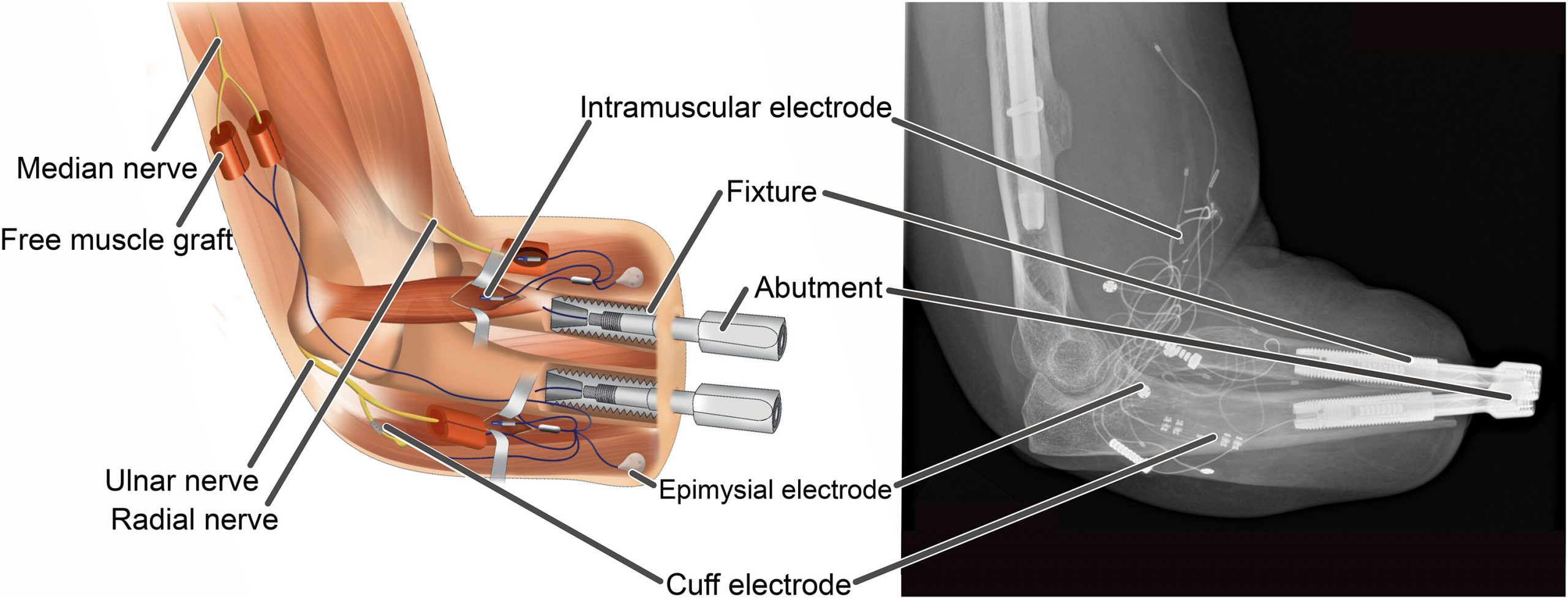
Schematic and X-ray of a fully integrated human-machine interface in a patient. Source.
Reinforcement learning in soft robotics
Turning our focus to soft robotics, researchers from the Center for Research and Advanced Studies of the National Polytechnic Institut of Mexico and the Universidad Autónoma de Coahuila have proposed an approach to use reinforcement learning (RL) for motor control of a pneumatic-driven soft robot modeled after continuum media with varying density. This method involves a continuous-time Actor-Critic scheme designed for tracking tasks in a 3D soft robot subject to Lipschitz disturbances. Their study introduces a reward-based temporal difference mechanism and a discontinuous adaptive approach for neural weights in the Critic component of the system. The overall aim is to enable RL to control the complex, uncertain, and deformable nature of soft robots while ensuring stability in real-time control, a crucial requirement for physical systems. This research focuses on the application of RL in managing the unique challenges posed by soft robots.

Distinct distortions of a cylindrical-shaped flexible robot. Source.
A teen-sized humanoid robot
Moving onto human-robot interactions, researchers from the University of Texas at Austin’s Human-Centered Robotics Laboratory have introduced a teen-sized humanoid robot named DRACO 3, designed in collaboration with Apptronik. This robot, tailored for practical use in human environments, features proximal actuation and employs rolling contact mechanisms on its lower body, allowing for extensive vertical poses. A whole-body controller (WBC) has been developed to manage DRACO 3’s complex transmissions. This research offers insights into the development and control of humanoids with rolling contact joints, focusing on practicality and performance.
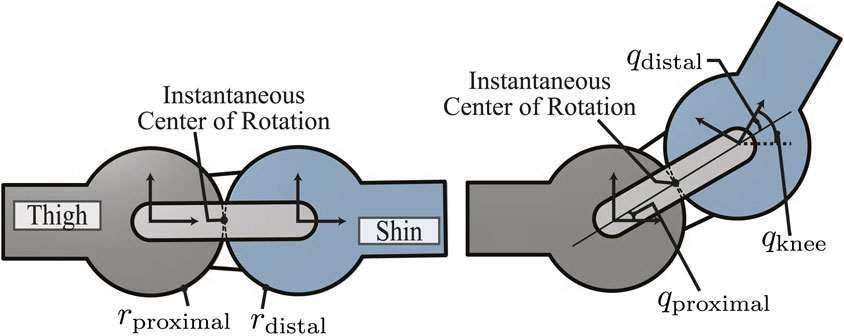
Diagram illustrating the rolling contact joint at the knee. Initial configuration (left) and post-angular displacement (right). Source.
Robots’ impacts on performance
Shifting our focus to psychology, recently researchers from Technische Universität Berlin have investigated the phenomenon of social loafing in human-robot teams. Social loafing refers to reduced individual effort in a team setting compared to working alone. The study involved participants inspecting circuit boards for defects, with one group working alone and the other with a robot partner. Despite a reliable robot that marked defects on boards, participants working with the robot identified fewer defects compared to those working alone, suggesting a potential occurrence of social loafing in human-robot teams. This research sheds light on the challenges associated with human-robot collaboration and its impact on individual effort and performance.
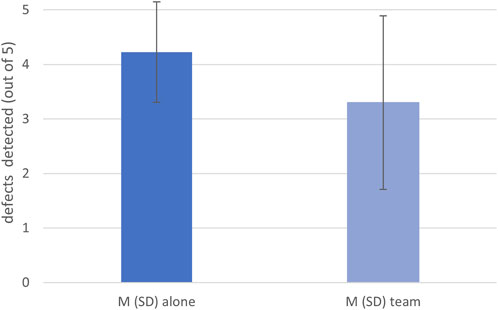
Results of solo work vs. robot work. Source.
A robot designed by AI
Changing our focus to robot design, researchers from Northwestern University have developed an AI system that designs robots from scratch, enabling it to create a walking robot in seconds, a task that took nature billions of years to evolve. This AI system runs on a lightweight personal computer, without relying on energy-hungry supercomputers or large datasets, offering the potential to design robots with unique forms rapidly. The system works by iterating on a design, assessing its flaws, and refining the structure in a matter of seconds. It paves the way for a new era of AI-designed tools capable of acting directly on the world for various applications.
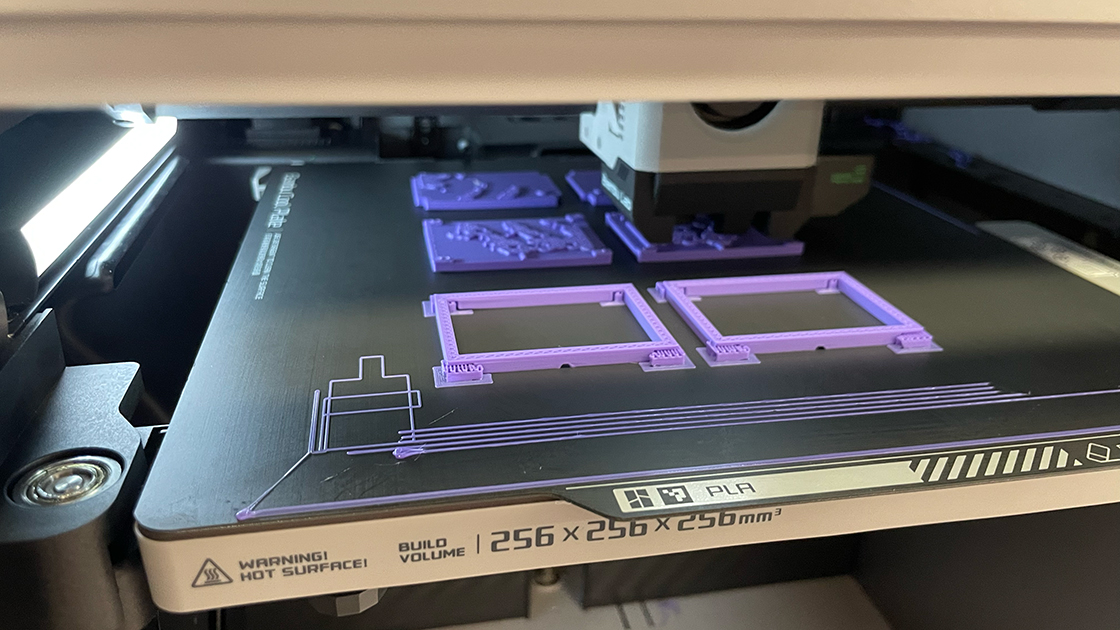
3D printer designing robot. Source.
A customizable robot for household organization
Finally, in the field of home robotics, researchers from Stanford, Princeton, Columbia University, and Google, have developed TidyBot, a one-armed robot designed to clean spaces according to personal preferences. TidyBot uses a large language model trained on internet data to identify various objects and understand where to put them, making it highly customizable to different preferences. In real-world tests, the robot can correctly put away approximately 85% of objects, significantly improving household organization. While TidyBot still has room for improvement, researchers believe it holds great promise for making robots more versatile and useful in homes and other environments.
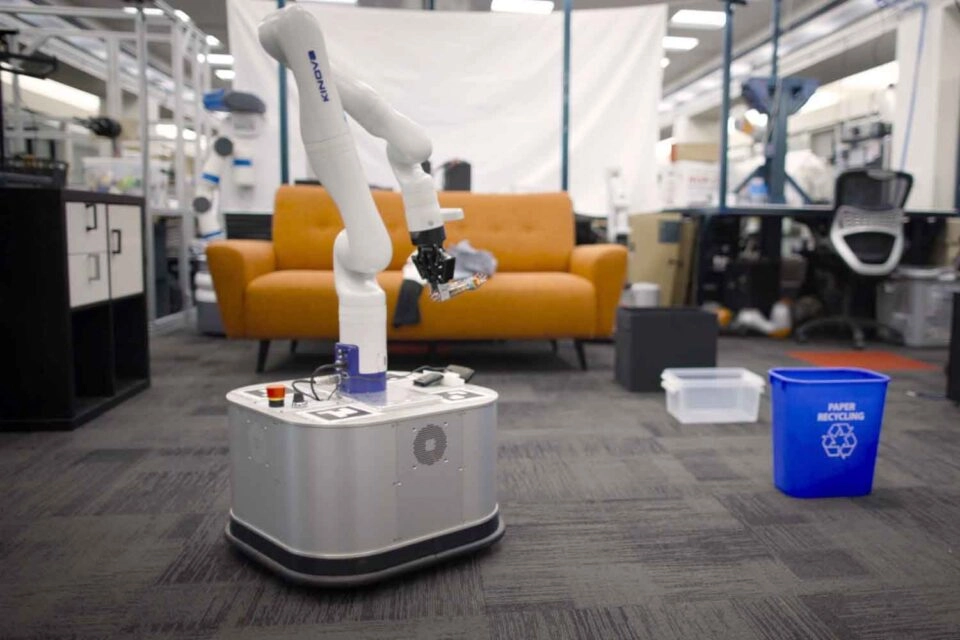
Tidybot in training. Source.
The ongoing development in a multitude of sectors highlights the flexibility and steadily advancing character of robotics technology, uncovering fresh possibilities for its incorporation into a wide range of industries. The progressive expansion in the realm of robotics mirrors unwavering commitment and offers a glimpse into the potential consequences of these advancements for the times ahead.
Sources:
- Hinrichs, P., Seibert, K., Arizpe Gómez, P., Pfingsthorn, M., & Hein, A. (2023). A Robotic System to Anchor a Patient in a Lateral Position and Reduce Nurses’ Physical Strain. Robotics, 12(5)
- Ortiz-Catalán, M., Zbinden, J., Millenaar, J., D’Accolti, D., Controzzi, M., Clemente, F., Cappello, L., Earley, E. J., Enzo Mastinu, Justyna Kolankowska, Munoz-Novoa, M., Stewe Jönsson, Njel, C., Paolo Sassu, & Rickard Brånemark. (2023). A highly integrated bionic hand with neural control and feedback for use in daily life. Science Robotics
- Pantoja-Garcia, L., Parra-Vega, V., Garcia-Rodriguez, R., & Vázquez-García, C. E. (2023). A Novel Actor—Critic Motor Reinforcement Learning for Continuum Soft Robots. Robotics, 12(5)
- Bang, S. H., Gonzalez, C., Ahn, J., Paine, N., & Sentis, L. (2023, September 26). Control and evaluation of a humanoid robot with rolling contact joints on its lower body. Frontiers.
- Cymek, D. H., Truckenbrodt, A., & Onnasch, L. (2023, August 31). Lean back or lean in? exploring social loafing in human–robot teams. Frontiers.
- Instant evolution: AI designs new robot from scratch in seconds. (n.d.). News.northwestern.edu.
- University, S. (2023, October 3). Robot provides personalized room cleanup. Stanford News.